Home > Auctions > 4 June - 8 June 2024
Ancient Art, Antiquities, Natural History & Coins
Auction Highlights:
Ex German art market, 2000s.
Acquired from an EU collector living in London.
From the collection of Surrey, UK, gentleman.
Cf. Appels, A. & Laycock, S., Roman Buckles and Military Fittings, Witham, 2007, items AA9.2, AA9.3, for similar discoid elements.
Military phalerae with representations of Medusa or the Gorgoneion were popular among the Roman army. They decorated horse harnesses and officers' armour. They were also used as appliqués for scabbards, caskets, or other items in military use. Our phalera is classical in style, recalling the style of the Gorgoneia of the Nemi's ship, and it could also have been used as decorative item for furniture.
Found whilst searching with a metal detector in East Lindsey, Lincolnshire, UK, on Wednesday 19th August 1998.
From a collection acquired on the UK art market from various auction houses and collections mostly before 2000.
From an important Cambridgeshire estate; thence by descent.
Accompanied by a copy of the British Museum's Portable Antiquities Scheme (PAS) report no.NLM995.
Recorded with the Portable Antiquities Scheme no.NLM995.
This small statuette of a male figure in short hooded cloak (cucullus) has the left arm raised towards the chin, and the right arm lies on left arm just below the wrist. A similar statuette in PAS is identified as possibly depicting an adorant.
Found Wiltshire, UK, before 1974.
Accompanied by a copy of an article titled A Figurine of Mercury from Brixton Deverill, by Martin Henig.
A Figurine of Mercury from Brixton Deverill, by Martin Henig.
Mercury is often shown wearing a chlamys but the present figure is one of a known group which features his nude form. The modelling is of good quality.
Acquired from Sasson Ancient Art, Jerusalem, Israel, in 2008.
From the Keane private collection, Kent, UK.
Accompanied by an original signed certificate of authenticity, export approval, and invoice (US $9,500.00), from Sasson Ancient Art.
Accompanied by a copy of the Israel Antiquities Authority export licence.
This lot has been checked against the Interpol Database of stolen works of art and is accompanied by a search certificate number no.12100-216768
Cf. Kunze, M., Meisterwerke Antiker Bronzen und Metallarbeiten aus der Sammlung Borowski, Mainz, 2007, item C24.
From a collection acquired on the UK art market from various auction houses and collections mostly before 2000.
From an important Cambridgeshire estate; thence by descent.
Cf. Rolland, H., Bronzes Antiques de Haute Provence, Paris, 1965, item 324, for type.
The small statuette was possibly part of a scene representing Poseidon and Amphitrite. The riches of the sea and the dangers of navigation were merged by the ancients into a famous myth known as the wedding procession between Poseidon and the Nereid Amphitrite. Involved in the procession were nereids, tritons and hippocampi.
From a collection acquired on the UK art market from various auction houses and collections mostly before 2000.
From an important Cambridgeshire estate; thence by descent.
Cf. Rolland, H., Bronzes Antiques de Haute Provence, Paris, 1965, item 321; Beutler, F. et al., Der Adler Roms. Carnuntum und der Armee der Cäsaren, Bad-Deutsch Altenberg, 2017, item 1005, for similar.
Statuettes of foreign ‘barbarian’ prisoners of this type have been found along the Danube. Their spread coincides with the Marcomannic wars of the Emperor Marcus Aurelius. The Swabian knot in this warrior’s hair has parallels with the warrior depicted on the contemporary Sarcophagus of Portonaccio, which represents a battle between Romans and Germanic Gauls.
From a collection acquired on the UK art market from various auction houses and collections mostly before 2000.
From an important Cambridgeshire estate; thence by descent.
Cf. Rolland, H., Bronzes Antiques De Haute Provence, Paris, 1965, items 112-118; see Reinach, S., Répertoire de la statuaire Grecque et Romaine, Paris, 1897, p.430, item 9.
The figure lacks the small dorsal wings which are normally present on a putto, although the curled locks of hair are typical of the type. During the Roman imperial period, children were widely represented in the art of both the public and private spheres. Images of both mortal and divine children appeared in the artworks and furnishings of the home, on the tomb monuments and burial containers associated with the funerary realm.
From the property of the late Mr SM, London, UK, 1969-1999.
Ex Ancient World, York, Yorkshire, UK.
Acquired circa 1995.
Property of a London, UK, collector.
Acquired in the 1930s.
From the family collection of Mr F. Morand, France.
From the M.J. collection, Wales, UK.
Accompanied by an academic report by Dr Raffaele D'Amato.
This lot has been checked against the Interpol Database of stolen works of art and is accompanied by a search certificate number no.12070-217746.
Cf. Powell, T.G.E., The Art of Roman Gaul, London, 1961, fig.104.
The head shows a late Roman appearance in its features and hairstyle. The expression, the short thick neck and the style of the hair combined with the somewhat uncouth and forceful expression may indicate a local Gallo-Roman character.
Formerly in a French private collection in Compiègne, since the 1960s.
Acquired from Galerie Chenel, 2015.
Accompanied by a copy of a French cultural passport no.166817.
Accompanied by an academic report by Dr Laura Maria Vigna.
See Pozzi, E., Cantilena, R., La Rocca, E., Pannuti, U., Scatozza, L.,Le Collezioni del Museo Archeologico di Napoli, La scultura greco-romana, Le sculture antiche della Collezione Farnese, Le collezioni monetali, Le oreficerie, La collezione glittica, Milano, 1989, pp. 100-101, nn. 31-32; Cadario, M., Doriforo della “Palestra Sannitica”,’ in La Regina, A. (ed.), Nike. Il gioco e la vittoria, Milano, 2003, pp. 214 ss.; Adembri, B., Torso di Doriforo, in Reggiani A.M. & Sapelli Ragni, M., Eroi e atleti. L’ideale estetico nell’arte da Olimpia a Roma a Torino 2006, Torino, 2006, pp.140ss.; Zevi, F., Demma, F., Nuzzo, E., Rescigno, C., Valeri, C., Museo Archeologico dei Campi Flegrei, Catalogo generale, 1, Cuma, Napoli, 2008, p.334; Franciosi, V., Il “Doriforo” di Pompei, in Franciosi, V., Thémelis, P.G., Pompei/Messene. Il “Doriforo” e il suo contesto,Mediterraneo Miti Storia Armonia, 2 Università degli Studi Suor Orsola Benincasa, Napoli, 2013, pp.11-33.
Lyndsey Ingram, Lines of Enquiry, London, 17 September - 8th November 2019, pp.36-37.
The model of the sculpture recalls the Polykleitian tradition. In particular, the tension of the muscles of the athletic body recalls the Doryphoros of Polykleitos, a famous bronze sculpture erected in Argos in around 450-440 B.C., as evidenced by a stele found there. The statue represented a hero, perhaps Achilles, or a winning athlete. Many Hellenistic and Roman copies of this sculpture are preserved, most notably in marble. These include the Tiberian-era Doryphoros in the National Museum of Naples, from Pompeii, the nude male statue, a copy of the Doryphoros of Polykleitos, in the Doria Pamphilj Collection, dated to the end of the 1st century A.D. The raised left shoulder is reminiscent of the Diadumenos, a work by the same artist made in Argos in around 430-420 B.C., depicting an athlete girding his head with ribbons or fillets, a symbol of victory, known from many copies. The Polykleitos original and the subsequent copies were enormously popular and became canonical representations of physical perfection and refinement.
UK collection formed in the 1980s.
Ex property of a North London gentleman.
85 - 96 of 2809 LOTS

.jpg)

.jpg)
.jpg)
.jpg)
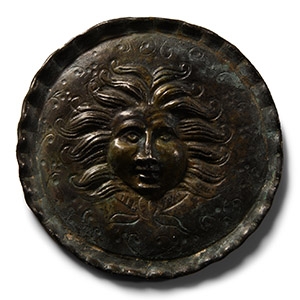

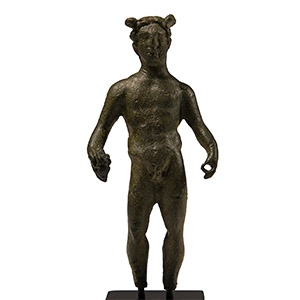

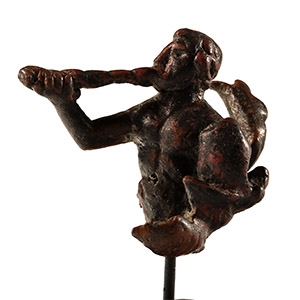
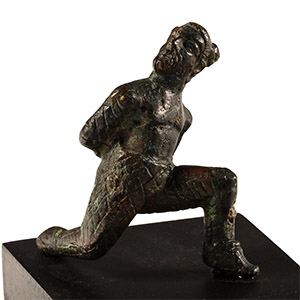
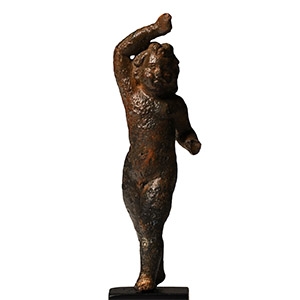
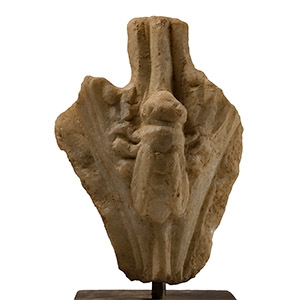
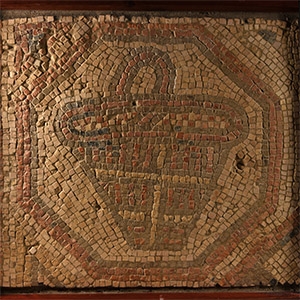
.jpg)




